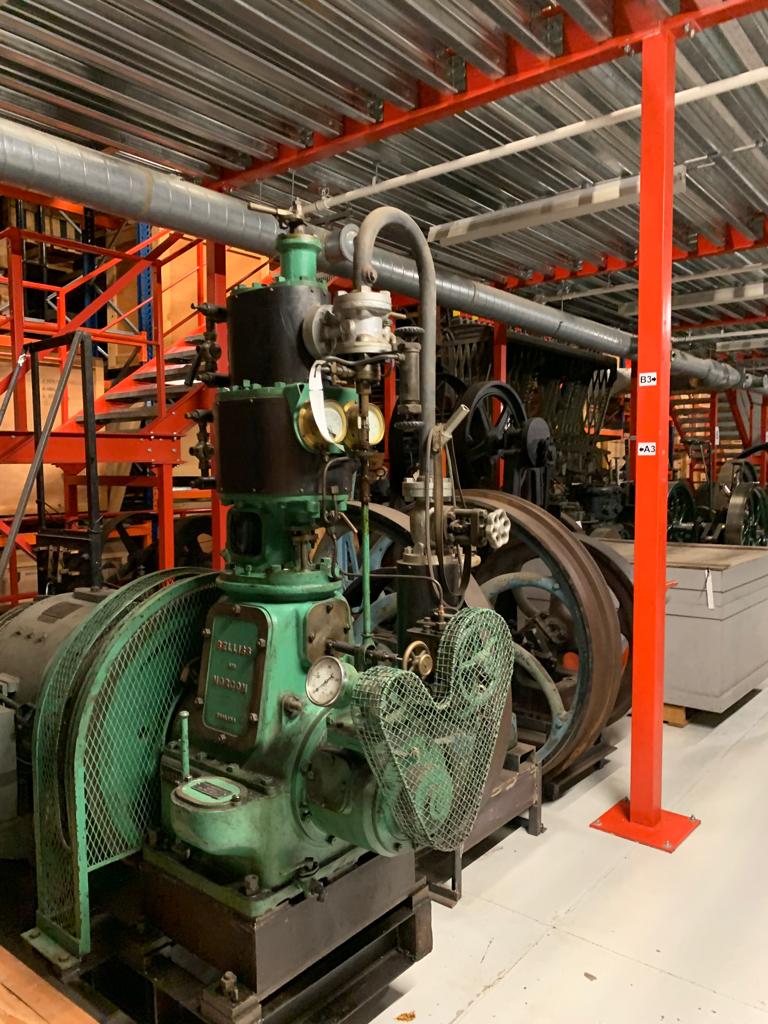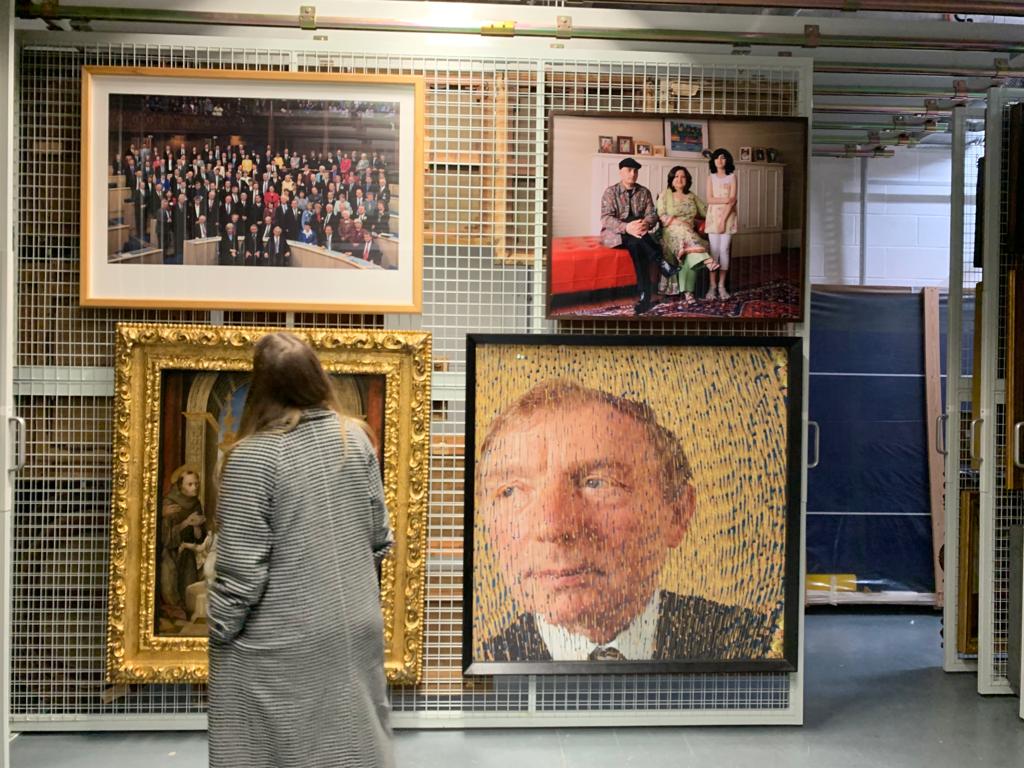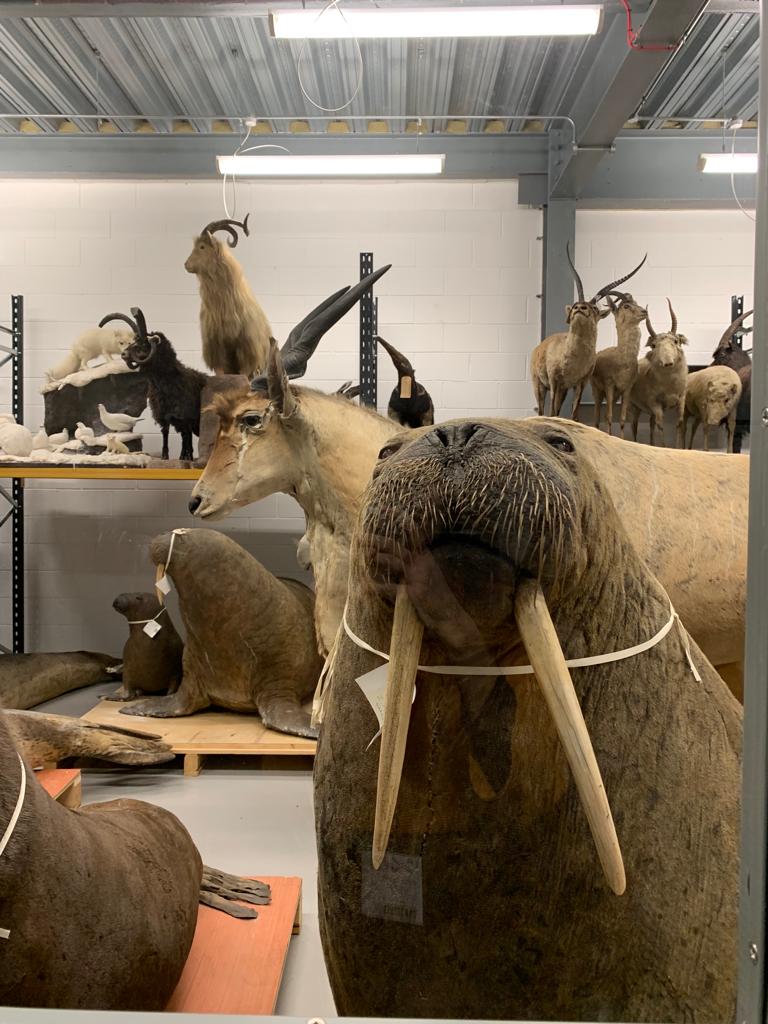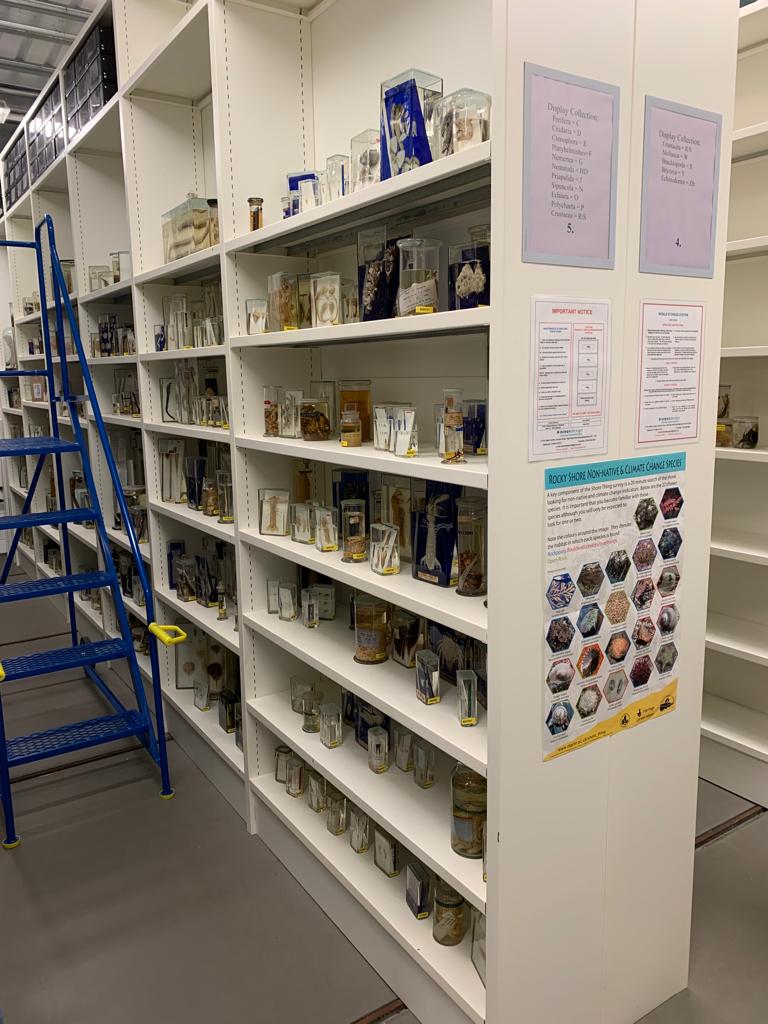
Granton Art Centre opened in 2002 and is a shared storage space where the National Galleries of Scotland and the National Museum of Scotland act as close neighbours.
The site went through an important renovation project between 2016 and 2017, which resulted in the buildings being more energy efficient. Another capital project will be completed by 2026 where the Centre (Art Works) will be transformed into a new, open, “un-curated” space – an opportunity to regenerate the area involving the local communities in a democratic way.
National Galleries of Scotland
The NGS store hosts around 10 thousand sculptures, 80 thousand prints and drawings and 5 thousand paintings and it’s an expanding collection. 2D materials are stored on the ground floor, whereas sculptures are located on the top floor.
The spaces are not curated and works coming into the store are placed whenever there is a gap on the racks. Primary school children have started touring the stores from 2010 and the teams have been engaging with them, starting insightful conversations whilst creating “a room within a room” where kids can compare artworks which are placed at the opposite sides of the racks.
Sustainability and footprint are at the forefront of this newly renovated store. As an example, there are barely any T- frames on the racks as they would take up extra footprint (as well as making it more difficult for the public to view the works). T-frames are present only if really needed, mostly for conservation reasons. Paper tape is also standard practice now and all poly is recyclable. The staff and a Green Officer regularly engage with local groups and advertise whenever disposing of wooden crates as well as temporary exhibition walls.
The use of paper has been ditched – portable tablets and computers are available in the flexible spaces within the store.
Labelling of works has also now been standardised and made more efficient – showing on the front and top, highlighting all relevant details as well as the future location.
As a new practice, every Thursdays, a small team of art handlers, a registrar and a conservator come to the store to audit, check, unpack/pack works lingering in the space, with the goal to make best use of it.
The building also has a temporary digitisation space and a flexible working space where recently the registration and documentation teams have been cataloguing a new archive collection.
National Museum of Scotland
This storage houses 12.5 million items/specimen, including natural sciences, skins, archaelogical items and the largest collection of whales in the world. The main external visitors are researchers and students.
The site has a very sturdy concrete base, thick exterior walls and stable environmental parameters – the biggest concern though, from a conservation and collection management point of view, remains pests. For this reason, strict rules are in place on where to consume food and drinks as well as layered doors clearly separate the storage areas from the communal spaces.
NMS will also be moving into the new Art Works together with the NGS’s side. A holistic approach on collection care and management as well as realising which standard to follow (gold, silver and bronze) depending on the collection to move, will be crucial and practical as one move will not fix all challenges currently present in the building.
In relation to the natural sciences specimens, the main focus in the more recent years, has been on preventive conservation, especially after big fluctuations of humidity have caused a friendly-looking walrus to crack. Now, the stores have a more aggressively controlled environment.
As mentioned above, this store houses the largest collection of whales in the world. The museum is part of the “stranding project” – whenever dead whales are found on beaches, these are flagged with the museum to be collected to inform research and fulfill the museum civic role. Whales are not hunted.
The museum also holds science and technology collections. Very large, often hazardous (containing mercury, asbestos, alcool, radium, controlled drugs) items which are treated in situ in a large conservation studio and radiation store. These items are safe to store, safe to display and safe to move.

A consistent programme of collections review and disposal started around 6 years ago and a lot of material has been disposed of/transferred since then, however, there is still a backlog due to the Covid pandemic. A project registrar will continue on this review work.
Giulia Caverni
Collection Registrar (Displays) – Tate




 Instagram
Instagram  LinkedIn
LinkedIn  Twitter
Twitter  My Account
My Account